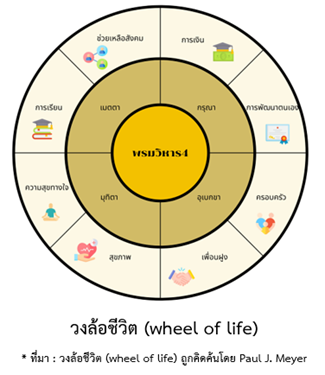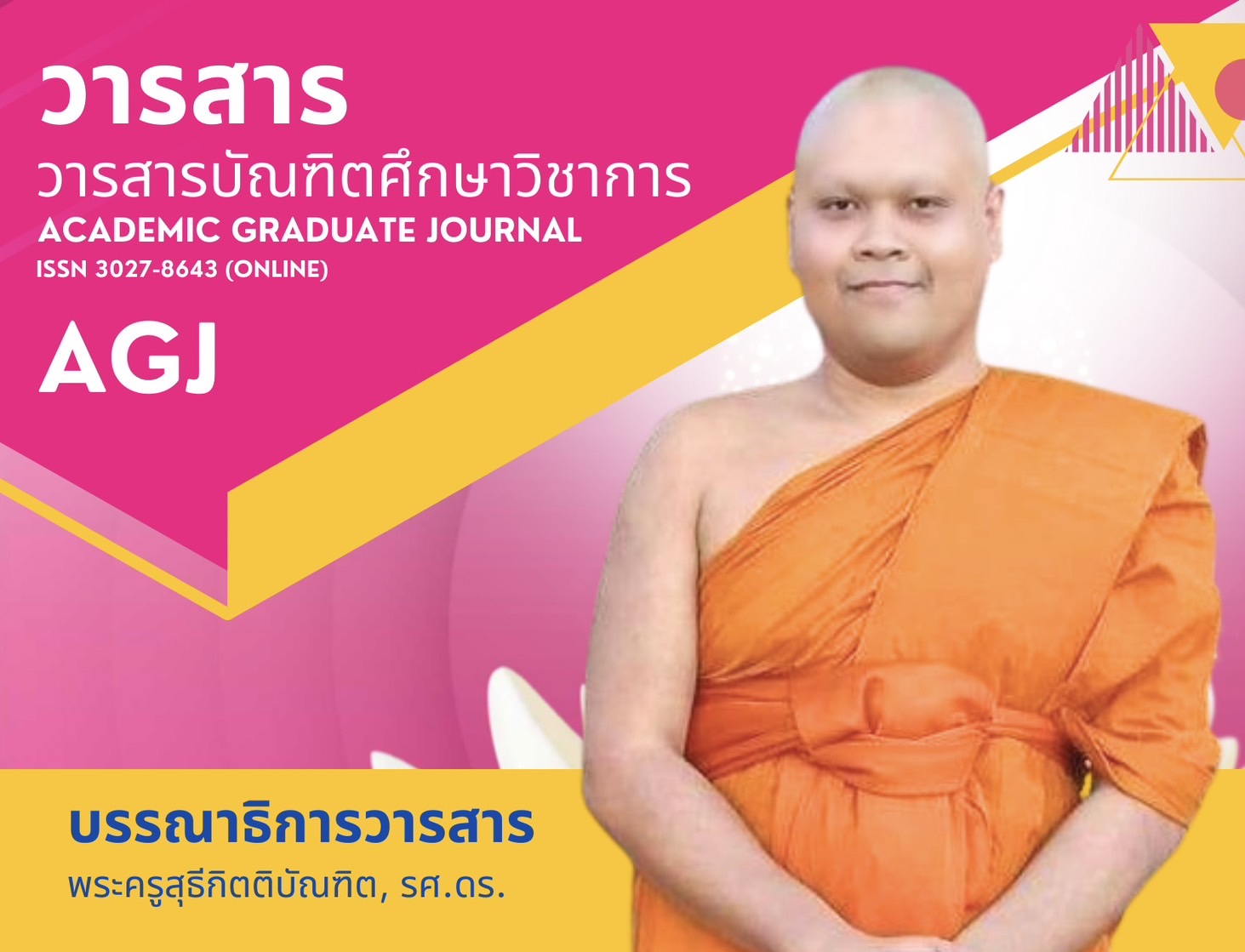WORK-LIFE (WITHOUT) BALANCE POLICY AND INTEGRATION OF BRAHMAVIHARA DHAMMA PRINCIPLES TO PROMOTE HAPPY WORKING OF PROFESSIONAL NURSES
Keywords:
Work-Life Balance, Professional Nurses, Brahmavihara 4, Policy ProposalsAbstract
This academic article aims to study the Work-Life Balance policy of professional nurses, which the 2024 survey found that the nursing profession is one of the 10 “dream careers” of Gen Z children. The factors that influence the decision to choose a career must meet the “dream life” needs, including salary, benefits, and work-life balance. The nursing profession is a profession that cannot follow the Work-Life Balance policy because what is true is “Work-Life (without) Balance”. As a result, Gen Z children will decide to quit if the work interferes with their quality of life. This has affected the problem of a shortage of professional nurses. The author has therefore collected policy recommendations from academics. Including presenting the author's opinions from a public administration perspective by applying the policy of “Work-Life Integration” or “Mindfulness-Wisdom Balance” which integrates the principles of Brahmavihara Dhamma or the 4 Brahmavihara principles. The moral principles for developing one's mind to be able to balance work and life in a noble and pure manner, including: 1. Metta (love) is the good desire to want others to be happy. 2. Karuna (compassion) is wanting to help others escape suffering. 3. Mudita (pleasure) when seeing others well, happy, and successful. 4. Upekkha (neutrality of mind) is aligning one's mind and self-according to fairness. This is a practice that results in happiness for both the provider and the recipient of the service. Live a balanced, valuable, peaceful, happy life every day and achieve sustainable success.
References
ขนิญร์นัสท์ อินทุลักษณ์ และ อารีย์วรรณ อ่วมตานี. (2557). การสร้างสมดุลชีวิตกับงานของพยาบาลวิชาชีพ โรงพยาบาลเอกชนแห่งหนึ่ง. วารสารพยาบาลทหารบก, 15(3), 382–389.
ฐานิดา ทิพวาที และคณะ. (2560). ปัจจัยทำนายสมดุลชีวิตการทำงานของพยาบาลวิชาชีพในโรงพยาบาลระดับตติยภูมิ กรณีศึกษาในโรงพยาบาลภูมิพลอดุลยเดช. วารสารพยาบาลทหารบก, 18 (Supplement 1), 198-206.
ธีรพร สถิรอังกูร และคณะ. (2564). การพัฒนารูปแบบการบริหารการพยาบาลในสถานการณ์การระบาดของโควิด-19 ในโรงพยาบาลสังกัดกระทรวงสาธารณสุข. วารสาริชาการสาธารณสุข, 30(2), 320-333.
ปราโมทย์ ถ่างกระโทก และคณะ. (2564). อิทธิพลของสมดุลชีวิตกับการทำงานและความพึงพอใจในงานต่อคุณภาพชีวิตของพยาบาลวิชาชีพไทย. วารสารวิชาการสาธารณสุข, 30(2), 344-352.
พระพรหมคุณาภรณ์ (ป.อ.ปยุตฺโต). (2551). พจนานุกรมพุทธศาสตร์ ฉบับประมวลธรรม (พิมพ์ครั้งที่ 16). กรุงเทพฯ: เอส.อาร์. พริ้นติ้ง แมส โปรดักส์ จำกัด.
พัชรินทร์ เขตประทุม และคณะ. (2563). ความขัดแย้งระหว่างงานกับครอบครัวของพยาบาลในโรงพยาบาลเถิน จังหวัดลำปาง. พยาบาลสาร, 47(7), 408-418.
มหาวิทยาลัยหอการค้าไทย. (2567). 10 อาชีพเด่น อาชีพในฝันของเด็กรุ่นใหม่ และสถานภาพของเด็ก Gen Z ปี 2567. สืบค้น 15 พฤษภาคม 2567, จาก https://www.utcc.ac.th/
ราชบัณฑิตยสถาน. (2548). พจนานุกรมศัพท์ศาสนาสากล อังกฤษ-ไทย ฉบับราชบัณฑิตยสถาน (พิมพ์ครั้งที่ 2). กรุงเทพฯ: ห้างหุ้นส่วนจำกัด อรุณการพิมพ์.
เรวดี ศิริภาพ. (2562). รูปแบบการพัฒนาภาวะเชิงพุทธะบูรณาการของพนักงานบริษัท (วิทยานิพนธ์ปริญญาพุทธศาสตรดุษฎีบัณฑิต สาขาวิชาพระพุทธศาสนา). พระนครศรีอยุธยา: มหาวิทยาลัยมหาจุฬาลงกรณราชวิทยาลัย.
สภาการพยาบาล. (2560). นโยบายชั่วโมงการทำงานของพยาบาลเพื่อความปลอดภัยของผู้ป่วย. สืบค้น 18 เมษายน 2567, จาก https://www.tnmc.or.th/images/userfiles/files/H002.pdf
สภาการพยาบาล. (2564). ประกาศสภาการพยาบาล เรื่อง แถลงการณ์สภาการพยาบาลในสถานการณ์แพร่ระบาดโรคโควิด-19. สืบค้น 20 เมษายน 2567, จาก https://www.tnmc.or.th/images/userfiles/files/TNMC_Covid-19%20270764.pdf
หลวงพ่อพุทธทาสภิกขุ. (2566). การทำงานคือการปฏิบัติธรรม. สืบค้น 30 ธันวามคม 2566, จาก https://www.youtube.com/watch?v=qbcfGGYShA8
อนิสา สังข์เจริญ และ วศิวพร แต้มคู. (2023). การสร้างความสมดุลชีวิตกับการทำงานในบทบาทของครูตามหลักไตรสิกขา. วารสาร มจร บาฬีศึกษาพุทธโฆสปริทรรศน์, 9(1), 208-224.
Fu, C.K., & Shaffer, M. A. (2001). The tug of work and family: Direct and indirect domain-specific determinants of work-family conflict. Personal Review, 30 (5), 502-522.
Greenhaus, J.H. , et al. (2003). The relation between work-familybalance and Quality of Life. Retrieved May 2, 2024, from https://www.researchgate.net/publication/222543597
Herzberg, F., et al. (1959). The Motivation to Work. (2nd Ed.), New York: John Wiley & Sons Inc.
Hyman & Summers. (2004). Lacking balance? Work-life employment practices in the modern economy. Personnel Review, 33(4), 418-429.
Sakid. (2023). Work Life Balance คืออะไร ทำไมจึงสำคัญกับการทำงานยุคใหม่. สืบค้น 20 มกราคม 2567, จาก https://www.sakid.app/blog/work-life-balance/The Start of Happiness. (2024). Wheel of Life – A Self-Assessment Tool. Retrieved May 3, 2024, from https://www.startofhappiness.com/wheel-of-life-a-self-assessment-tool/
Walton, R. E. (1974). Improving the quality of work life. Harvard Business Review, 15(5), 12-16.
Worakan J. (2024). Work-Life Balance. Retrieved February 29, 2024, from https://thematter.co/lifestyle/work-life/work-life-balance-doesnt-exist/223183
Huse, E.F. & Thomas G. C. (1980). Organization development and change. (2nd ed.). St.Pual: West Publishing Company.







